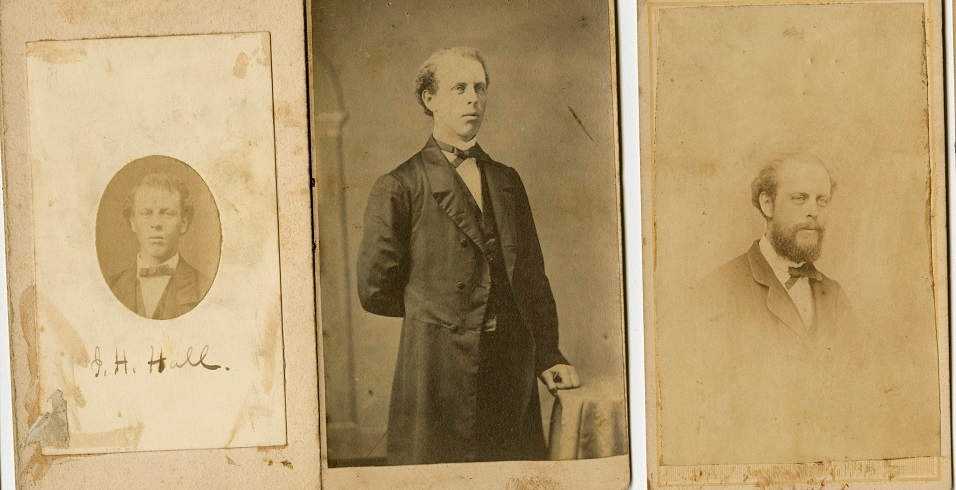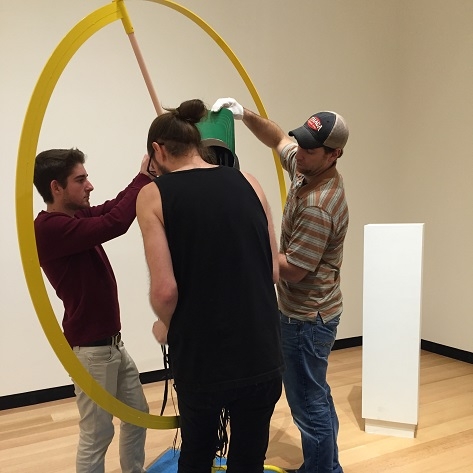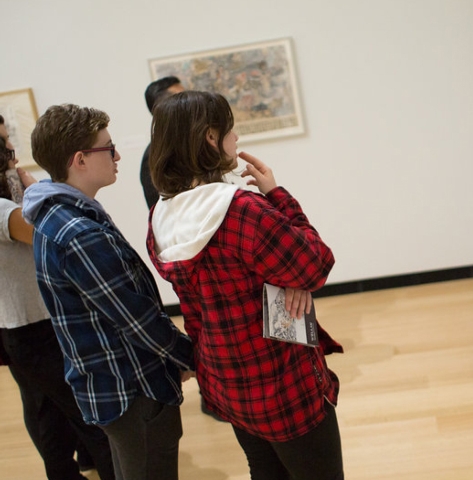Images courtesy of the Hamilton College Archives.

When a collection of sixty-six antiquities arrived at Hamilton as the result of a generous gift, they came with little information from the donor about their past except for the family lore that had been passed down through three generations. The objects had been acquired by the donor’s grandfather-in-law, Isaac Hollister Hall, Class of 1859, sometime between 1875 and 1877, when Hall assisted a man named General Luigi Palma di Cesnola in an archaeological dig at Larnaca in Cyprus.
My research on this collection took me from the Wellin Museum to the basement of Burke Library, home to the college archives – a treasure trove of Hamilton history. There I found seven boxes full of materials pertaining to Hall, which reveal him as a passionate academic with a strong interest in the art and languages of antiquity. After graduating from Hamilton in 1859 and tutoring here for four years, Hall attended Columbia Law School, graduating in 1865. After a ten-year-long law career in New York City, he taught at a college in Beirut from 1875 to 1877, where he did significant research on a Syriac manuscript. It was during this time frame that Hall’s family believes he assisted in the excavation in Cyprus and may have acquired the objects now housed at the Wellin. From 1885 until his death in 1896, Hall served as the curator of the Departments of Sculpture and Casts at the Metropolitan Museum of Art in New York City.
After coming to understand Isaac Hall’s history, I searched through each box in the Archives in hopes of finding information that might pertain to Hall’s involvement with an archaeological dig in Cyprus. The boxes contained materials from his entire career ranging from scrolls of Syriac manuscripts to envelopes containing “Babylonian gold dust” and mummy wrappings.
Eventually, I found material relevant to my search including numerous reference books on Cyprus, notes about Cypriote inscriptions, and most significantly a large collection of letters sent to Hall from Luigi Palma di Cesnola, who you’ll recall is the very man that the donor revealed led the dig in Cyprus that Hall participated in. With a growing sense of curiosity, I began to research di Cesnola to better understand the relationship that the two men had in hopes of uncovering more information about the Wellin’s collection of antiquities from Cyprus.
This post is the second part of a series about the origins and history of the Wellin’s recently acquired collection of Cypriot antiquities. For part one, visit https://www.hamilton.edu/wellin/wellinformed/unpacking-the-past







